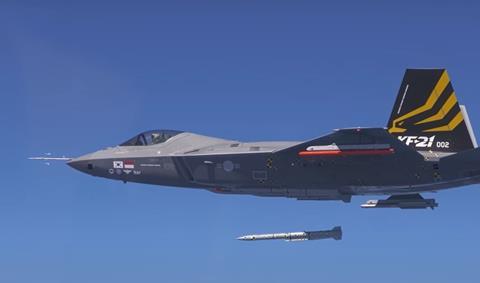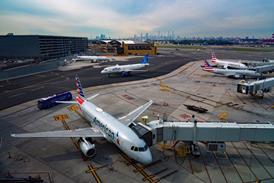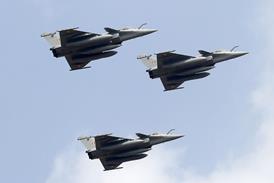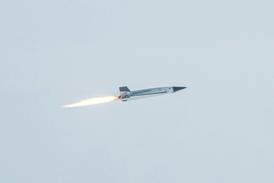South Korea has entered a contract with MBDA for Meteor long-range air-to-air missiles for the Korea Aerospace Industries (KAI) KF-21 Boramae fighter.
Manufacturing work on South Korea’s first weapons has been contracted, to ensure they are available when the KF-21 enters service, says MBDA.

“Now the project has entered its next stage, with the main manufacturing phase now contracted to ensure the Republic of Korea Air Force [ROKAF] receives its first operational Meteor missiles in time for the initial in-service date of the KF-21,” says MBDA.
“The ROKAF will also have the potential to benefit from a common Meteor missile stockpile across KF-21 and [Lockheed Martin] F-35 as both will use Meteor developed for internal carriage.”
MBDA’s statement, which offers no details of weapon numbers, follows reports last month that Seoul will initially obtain 100 Meteors.
The KF-21 is expected to enter service in late 2026.
MBDA states that many technical challenges were tackled to provide the Meteor capability for the KF-21. The company worked with KAI and Korea’s Defense Acquisition Program Administration in areas such as aerodynamics, mechanical engineering, radars, data linking, and software.
MBDA notes that the first KF-21 prototype flew with a quartet of Meteors during its maiden flight in July 2022. Ejection tests took place in 2023 and firing trials in early 2024.
A fleet of six KF-21s – four single-seaters and two two-seaters – have been conducting test flights. The programme recently hit its 1,000th test mission, roughly halfway through its 2,000-sortie flight test campaign.
NETHERLANDS CLEARED FOR POSSIBLE $807 MILLION AMRAAM DEAL
The US government’s Defense Security Cooperation Agency (DSCA) has announced the possible sale to the Netherlands of up to 226 Raytheon AIM-120D3 Advanced Medium Range Air-to-Air Missiles (AMRAAMs).
In addition to the missiles the package includes a range of other equipment and services. The potential package is valued at $807 million.
“The proposed sale will improve the Netherlands’ capability to meet current and future threats by providing advanced all-weather, beyond-visual-range, air-to-air defence to protect Dutch and allied forces in transition or combat and significantly improve the Dutch contribution to NATO requirements,” says the DSCA.


























